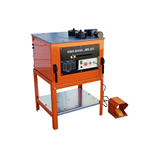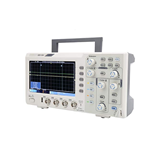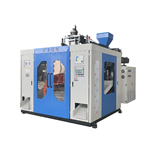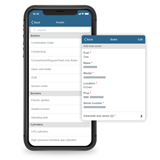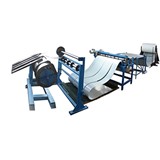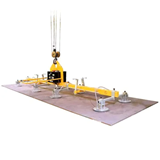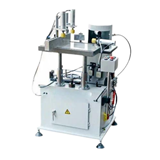Australian marine operators: Compare vessel finance options, loan terms & tax perks. Covers fishing boats, tugboats, cranes & more.
Key takeaways
- Loan sizes for marine equipment in Australia typically range from $50,000 to $5 million, depending on vessel type and size (ABS, 2024).
- Finance terms generally span 3 to 10 years, with flexibility based on asset life and cash flow cycles.
- Loan-to-Value Ratios (LVRs) vary between 70% and 85%, influenced by vessel age, condition, and market demand.
- Eligible vessels include commercial fishing boats, workboats, tugboats, barges, and support equipment like cranes and winches.
- Common lender requirements include proven operational history (2+ years), clear maintenance records, and valid marine registration.
- Popular finance options include chattel mortgages, hire purchase, leasing, and secured loans tailored for maritime assets.
- Tax incentives such as instant asset write-offs and accelerated depreciation can improve cash flow for eligible operators.
- Specialist marine finance brokers can help negotiate better terms by leveraging sector-specific lender relationships.
Introduction
Australian marine operators face unique challenges when financing expensive vessels and support equipment crucial to their business operations. Whether upgrading a commercial fishing fleet, purchasing workboats for harbour services, or investing in specialised marine machinery, securing the right finance package is essential to maintaining operational efficiency and managing cash flow.
With Australia’s marine industry contributing over $14 billion annually to the economy (Department of Agriculture, Fisheries and Forestry, 2025), access to flexible and well-structured finance is more critical than ever. This guide provides Australian operators with actionable insights into marine equipment finance options, lender expectations, eligibility criteria, and strategies to optimise your borrowing arrangements.
Types of marine equipment commonly financed
Australian marine operators finance a broad range of vessels and equipment, including:
- Commercial fishing vessels: Trawlers, purse seiners, longliners, and prawning boats.
- Workboats: Tugboats, pilot boats, barges, and survey vessels.
- Support equipment: Cranes, winches, onboard navigation systems, and loading gear.
- Recreational-commercial hybrids: Charter boats and dive support vessels used commercially.
Costs vary widely: a medium-sized fishing vessel may cost between $500,000 to $3 million, while tugboats and barges can exceed $5 million depending on specifications and customisation.
Key finance options for marine equipment in Australia
Chattel mortgage
- Ownership: Borrower owns the vessel from day one.
- Tax advantages: Interest and depreciation may be tax-deductible.
- Lender security: The vessel acts as collateral.
- Flexibility: Ideal for operators seeking asset ownership while preserving cash flow.
Hire purchase
- Ownership transfer: Full ownership after the last payment.
- Structured repayments: Fixed instalments over the loan term.
- Common use: Suitable for new vessels with predictable cash flows.
Lease financing
- Operating lease: Off-balance-sheet, equipment returned at term-end.
- Finance lease: Similar to hire purchase but with purchase option at term-end.
- Best for: Temporary use or when preserving working capital is essential.
Secured loans
- Collateral: Vessel or other business assets.
- Flexibility: Loan size and terms based on borrower creditworthiness.
- Common for: Established operators with strong balance sheets.
What lenders look for: eligibility and requirements
Australian lenders specialising in marine finance typically assess:
- Operational history: Minimum 2 years of profitable marine operations.
- Vessel condition: Full maintenance records and recent surveys.
- Marine registration: Proof of valid registration and compliance with Australian Maritime Safety Authority (AMSA) standards.
- Business financials: Demonstrated cash flow to service repayments.
- Loan-to-Value Ratio (LVR): Typically 70-85%, with newer vessels attracting higher LVRs.
- Credit profile: Positive business credit history, with personal guarantees often required for smaller operators.
Structuring repayments to suit marine operations
Marine businesses often experience seasonal or cyclical income. Lenders now offer flexible repayment options, such as:
- Seasonal repayments: Lower payments during off-peak seasons, higher during busy fishing or charter periods.
- Interest-only periods: Temporary interest-only terms to ease cash flow.
- Balloon payments: Deferred large final payment to reduce monthly instalments.
Tax advantages and depreciation
Australian marine operators can benefit from:
- Instant asset write-off: Eligible small to medium enterprises (SMEs) can immediately deduct assets costing up to $20,000 (subject to current ATO policies).
- Temporary full expensing: Allows full deduction of new or used equipment purchases up to $150 million in eligible cases.
- Depreciation schedules: Accelerated depreciation over vessel lifespans can reduce taxable income and improve cash flow.
Always consult a tax professional to ensure eligibility and maximise benefits.
Common pitfalls to avoid
- Overestimating vessel value: Rely on professional surveys to avoid financing based on inflated estimates.
- Ignoring residual values: Lenders assess residual (resale) value, impacting repayments and refinancing options.
- Underestimating operating costs: Factor in maintenance, insurance, and AMSA compliance costs when budgeting.
- Neglecting lender specialisation: Using general lenders may lead to less favourable terms compared to marine-specialist financiers.
- Skipping professional advice: Engage marine finance brokers and accountants familiar with the industry.
Step-by-step application process for marine equipment finance
Follow these key steps to simplify your marine equipment finance application and improve approval chances:
1. Prepare documentation
- Financials: Recent business financial statements and tax returns.
- Asset info: Details on the equipment’s make, model, age, and condition.
- Maintenance records: Up-to-date service logs.
- Business plan: Brief overview if financing supports growth or projects.
2. Choose a lender
- Research: Find lenders specialising in marine finance.
- Compare: Interest rates, loan terms, and fees.
- Check criteria: Business tenure, credit score, and asset eligibility.
3. Submit application
- Complete forms: Provide accurate, thorough information.
- Attach documents: Include all required paperwork.
- Stay responsive: Quickly answer lender queries.
4. Negotiate and finalise
- Review terms: Interest rates, repayments, fees, balloon payments.
- Seek flexibility: Repayment holidays or seasonal options.
- Confirm insurance: Ensure equipment insurance meets lender requirements.
- Sign and fund: Finalise contracts and secure funds.
Tips to boost approval chances
- Improve credit score: Fix errors and maintain good standing.
- Show asset value: Provide recent valuations.
- Demonstrate cash flow: Evidence of steady revenue.
- Use brokers: Work with marine finance specialists for better deals.
This concise approach helps Australian operators secure marine equipment finance efficiently and confidently.
FAQs: Navigating marine equipment finance for Australian operators
- Can I finance a used commercial fishing boat?
Yes. Many lenders offer financing for used vessels, but expect lower LVRs (typically 60-75%) and shorter terms (3-7 years) compared to new boats. A recent survey and valuation are usually required. - What interest rates are typical for marine equipment loans?
Rates in 2025 range from 6.5% to 10% depending on vessel age, loan size, and borrower creditworthiness. Specialist marine lenders often provide more competitive rates than general commercial lenders. - Are there government grants or incentives for marine equipment purchases?
While direct grants for marine vessel purchases are rare, operators may benefit from tax incentives like instant asset write-off and temporary full expensing. Some regional development programs also support maritime businesses—check local state government websites. - How much deposit is usually required?
Deposits vary but typically range from 10% to 30% of the vessel’s purchase price, depending on loan size, vessel condition, and borrower profile. - Can I bundle insurance and maintenance costs into the loan?
Some lenders allow insurance premiums and scheduled maintenance contracts to be included in the finance package, reducing upfront expenses. - What documents are needed to apply?
Standard documents include:
- Financial statements (last 2 years)
- Proof of business registration and AMSA compliance
- Vessel survey and valuation reports
- Personal and business identification
- Proof of income and operational history
Final thoughts
Marine equipment financing in Australia requires a tailored approach that considers vessel type, industry cycles, and operational needs. Understanding available finance options, lender criteria, and repayment flexibility helps operators optimise capital structure and protect cash flow.
Partnering with specialist marine finance brokers and maintaining strong financial records will improve your chances of securing competitive loan terms. With informed planning and expert advice, Australian marine operators can confidently expand their fleets and equipment, ensuring business growth and compliance.


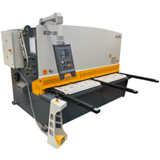
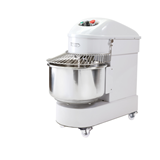

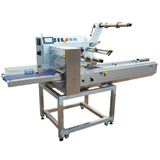
-160x160-state_article-rel-cat.png)
